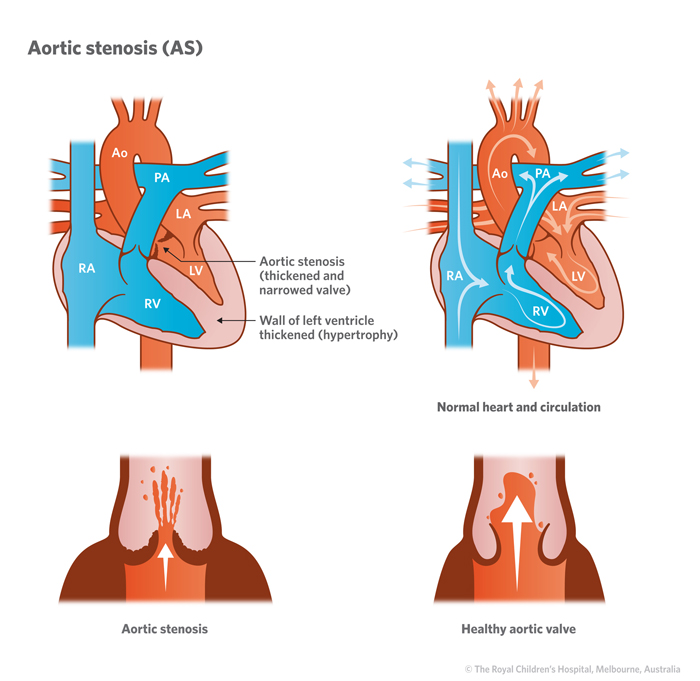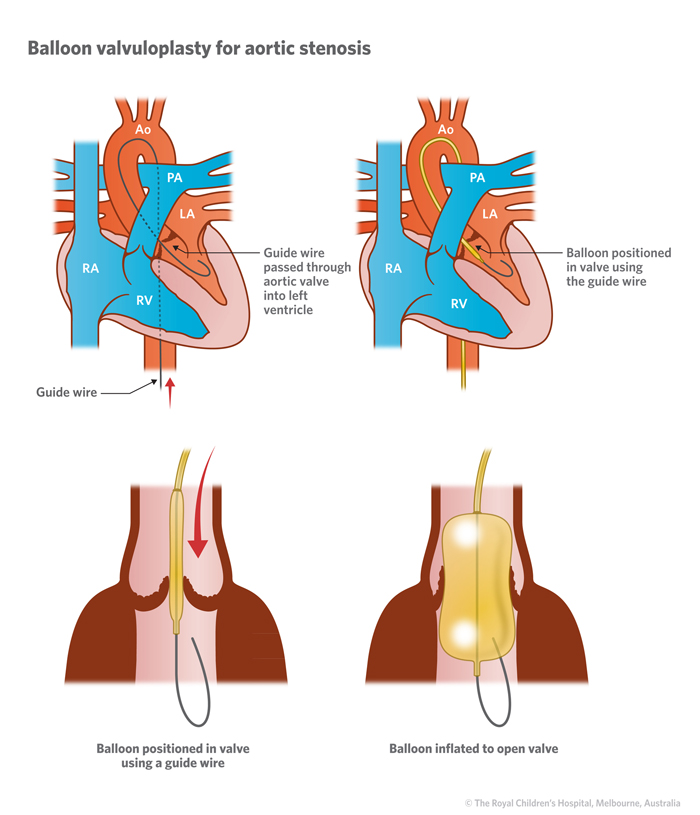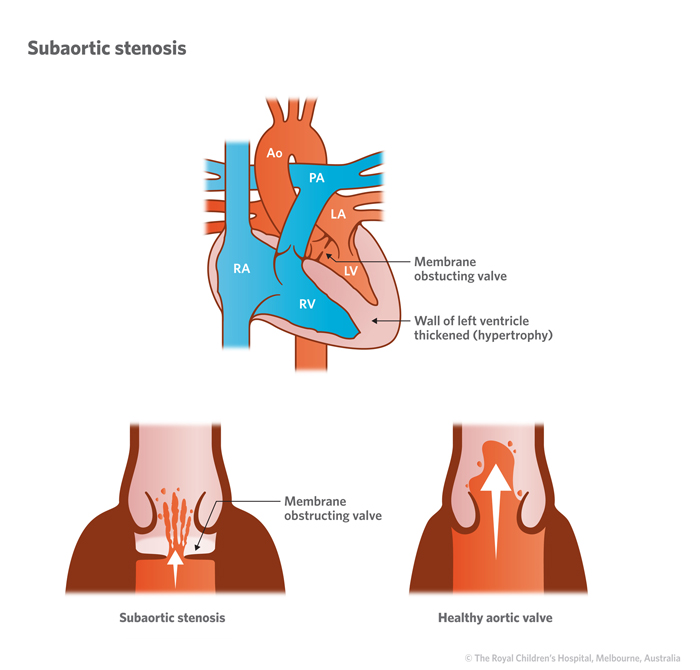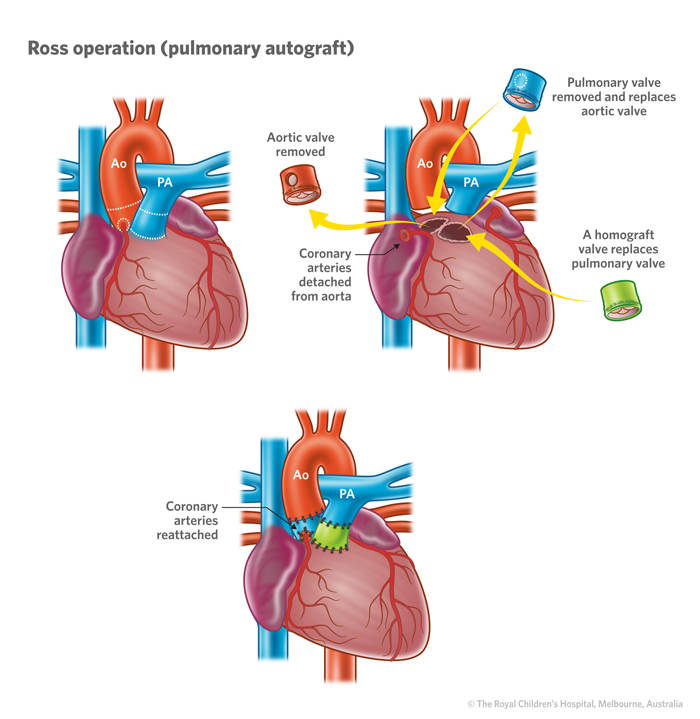The Aortic Valve is thickened and narrowed leading to the
development of abnormally high pressure in the left ventricle. The
left ventricular wall becomes thickened ("Hypertrophied"). If the
problem is severe it may require treatment, which usually involves
surgery in younger patients, though it may be possible to stretch
the valve with a balloon catheter (Balloon Valvuloplasty), in older
children. The catheter is passed from an artery in the leg. When
the tip is through the valve the balloon is inflated to open the
valve. Treatment does not completely cure the problem and the valve
sometimes tends to develop further problems with time, sometimes
needing reoperation or further balloon stretching.
If the valve is severely abnormal a valve replacement may be required.
Subaortic Stenosis - In this
condition the obstruction is below the valve


Subaortic Stenosis
In this condition the narrowing is below the aortic valve
(indicated by arrow). The effect on heart function is similar to
aortic valve stenosis. In many cases the obstruction is produced by
a 'membrane', but other types of subaortic stenosis also occur -
notably a 'muscular' type (also called "Hypertrophic Obstructive
Cardiomyopathy" (HOCM) or "Idiopathic Hypertrophic Subaortic
Stenosis" (IHSS).

Aortic Valve
Replacement
When the aortic valve is very abnormal and if it cannot be
effectively repaired a valve replacement operation may be
recommended. This may involve the use of an artificial valve, but
in many cases the patient's own normal Pulmonary valve can be used.
This is called the 'Ross Operation' (or Pulmonary Autograft).

Ross Operation
The healthy Pulmonary Valve is removed and sewn into the
position of the damaged Aortic Valve. The Pulmonary Valve itself is
then replaced with a 'Homograft Valve'. The advantage of this
operation is that the new aortic valve will grow with the child and
the Homograft Valve, which can be large enough to allow for growth,
is not subjected to high pressure and can last much longer in the
position of the low pressure Pulmonary Valve - though it is likely
that it will eventually need to be replaced at a further
operation.
Go toNormal Heart